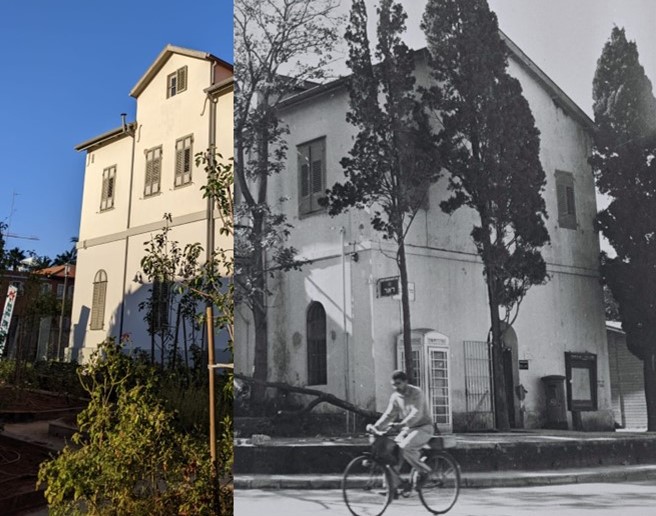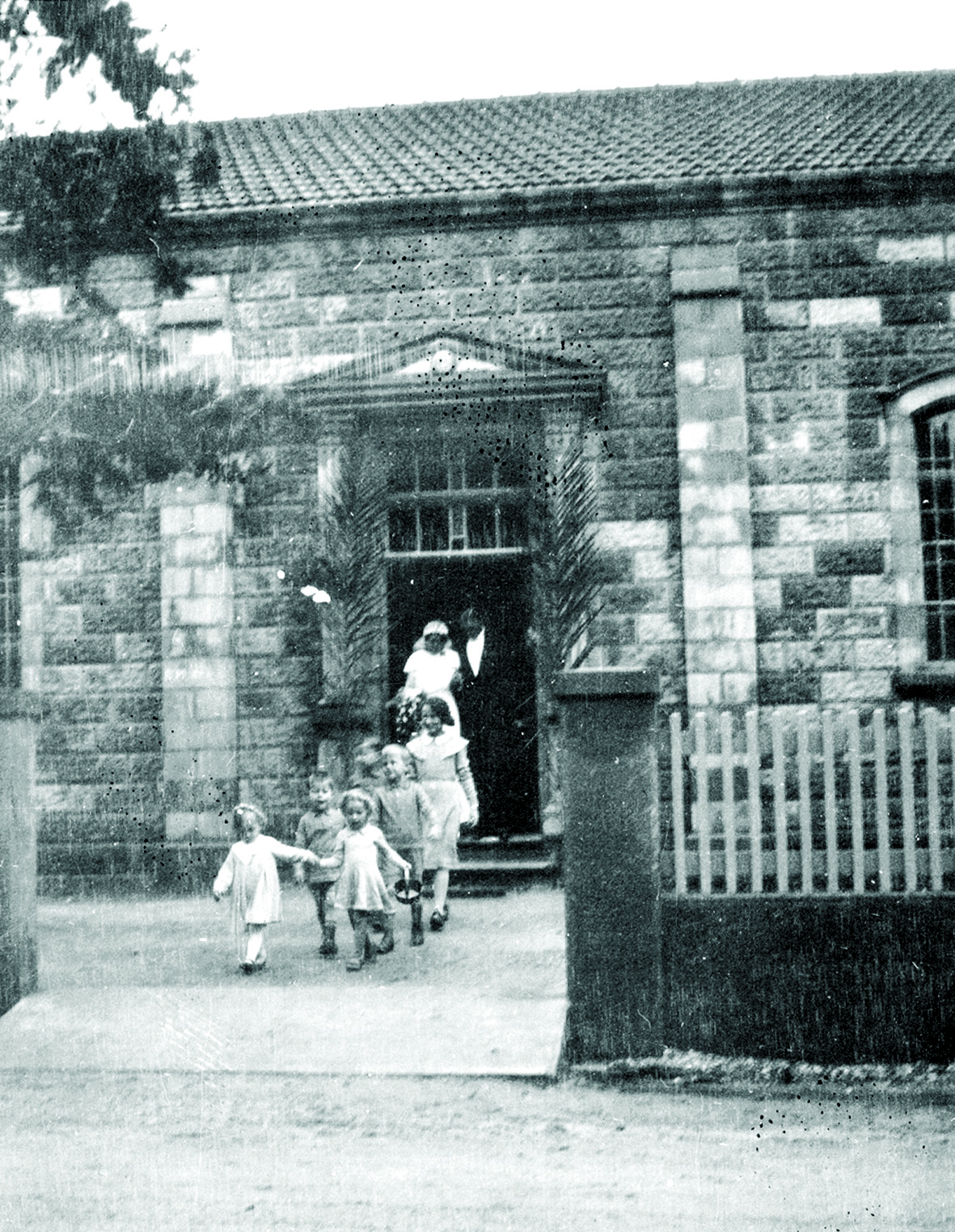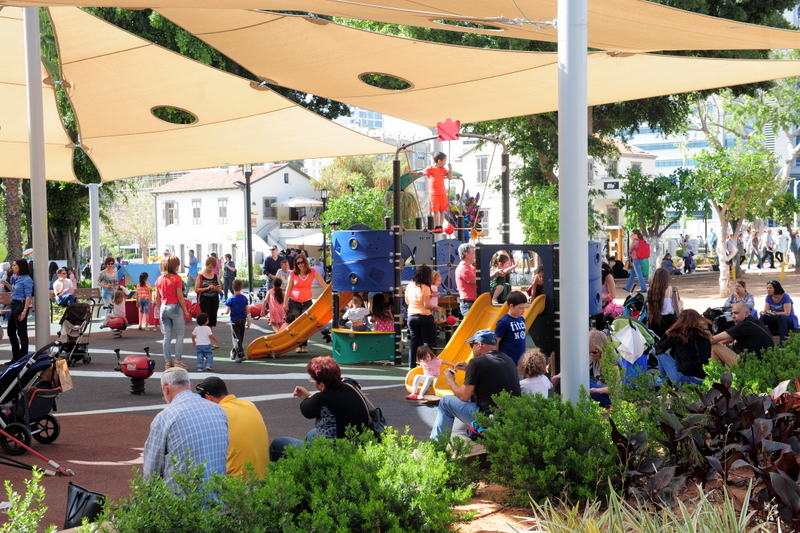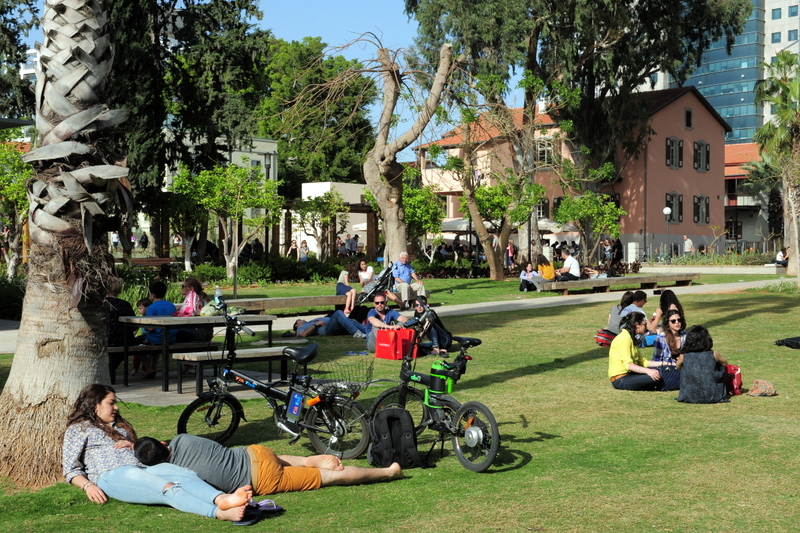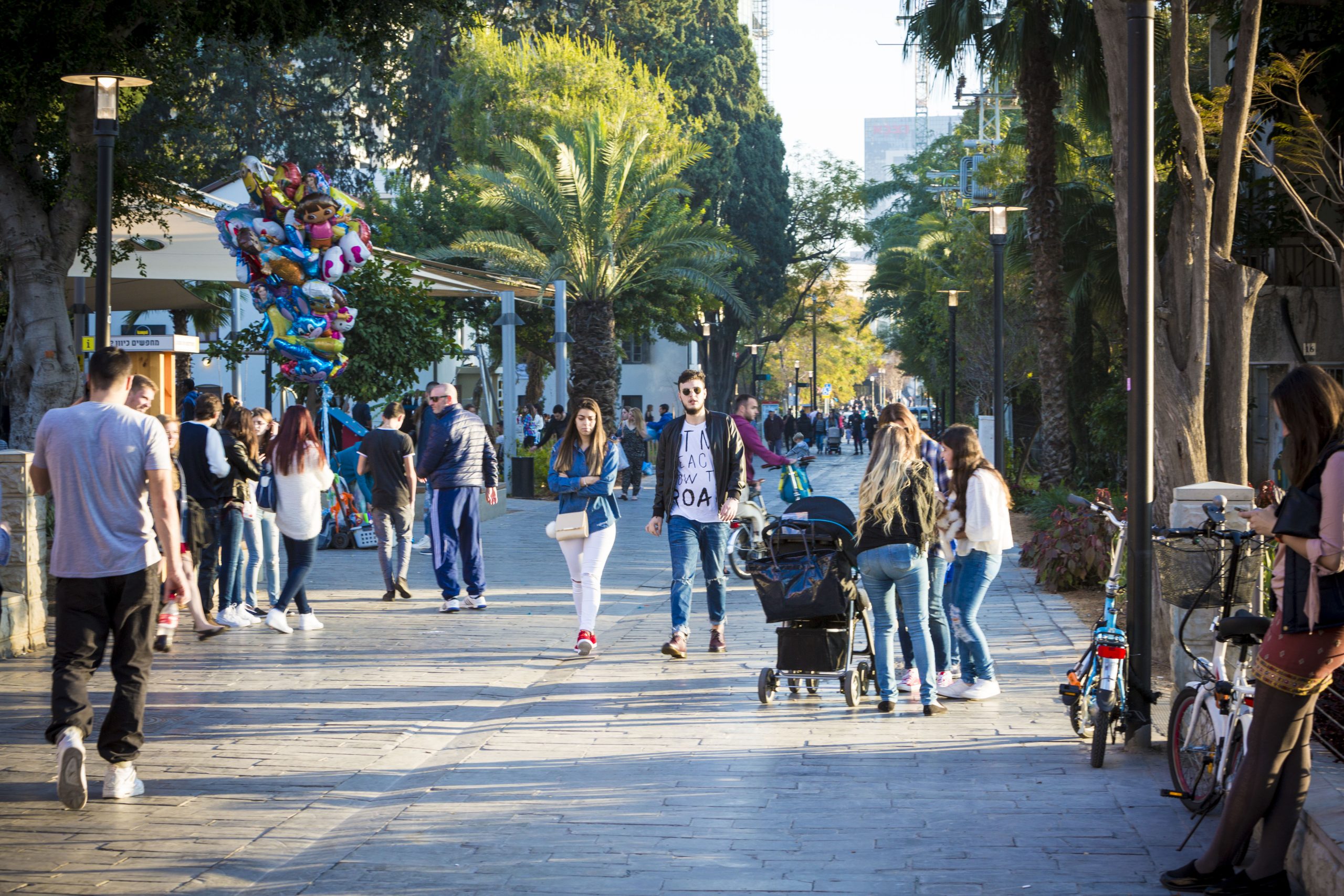
#Through the ages
An expanse of nature, culture, business and commerce at the heart of the city of Tel Aviv Yafo
From bustling high-tech offices to leisurely picnics, from urban agriculture to vibrant food festivals, from morning yoga to the last drink of the night,
Sarona Park weaves together countless disparate elements into a single Tel Avivi experience –
Old and new, work and fun, nature and city.
The park, a 12-acre haven of verdant greenery and inviting lawns, sits at the heart of the city, nestled within Tel Aviv’s thriving tech hub.
It offers a unique and enchanting blend of Tel Avivi café culture with a one-of-a-kind urban oasis –
Lawns perfect for a weekend sprawl, restored buildings that blend past and present, pampering daytime restaurants, and exquisite evening bars.
Once upon a time...
In 1871, on the western banks of the Ayalon River, the Templars, members of the Temple Society, established the colony of Sarona.
The Templars, devout Christians who hailed from southern Germany, dedicated themselves to agriculture and small-scale industry. Their thriving colony became a paragon of agricultural, technological and architectural excellence.
Towards the end of World War I, following the British conquest of the land, the Templars were exiled to Egypt, returning in 1921. The colony flourished under British rule. Its agricultural land was expanded, and new buildings were constructed in the International Style, adding a modern touch to the rural landscape.
At the outbreak of World War II in September 1939, the British declared the German Templars “enemy subjects.” The colony was turned into an internment camp, and its residents were deported to Germany and Australia.
At the onset of World War II, the British security forces began to establish a garrison at the site. After the war, the fortified camp was converted into a base for British forces operating in Tel Aviv during the Aliyah Bet period. Sarona Camp became a prime target for attacks by the Jewish underground groups Haganah, Irgun, and Lehi, and became a symbol of the armed struggle against British rule. In December 1947, the British transferred Sarona Camp to Jewish hands as part of their evacuation of the Gush Dan region. The new camp was renamed “Camp Yehoshua”, after Yehoshua Globerman, the Tel Aviv District Commander in the Haganah. The camp became the first military camp openly and independently operated by the Haganah. In May 1948, after the Haganah forces left Camp Yehoshua, the Templars’ homes were converted to house government ministries which, due to Jerusalem being besieged at the time, had taken up temporary residence in Tel Aviv.
On David Ben-Gurion’s orders, the name “Sarona” was changed to “HaKirya,” which translates to “the city” in Hebrew.
In December 1949, the government decided to relocate its ministries to Jerusalem, the capital. However, many representative offices and offices of most government ministries, including the Prime Minister’s Office, remained at HaKirya.
It wasn’t until the early 2000s that the government ministries vacated Sarona’s historic buildings in the southern part of the HaKirya complex and consolidated their operations at HaYovel Tower on Menachem Begin Road.
In 1955, the Israel Defense Forces General Staff Headquarters relocated from their temporary quarters in Ramat Gan to the northern part of the HaKirya complex, where they remain to this day.




